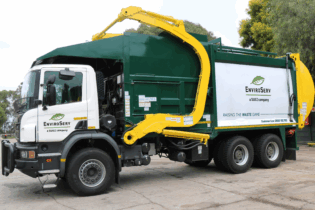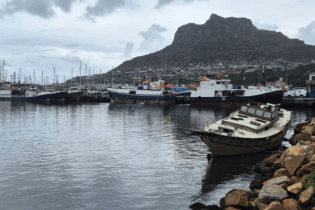THE government’s massive infrastructure drive has gone from simple planning to the first stages of implementation, but help is needed in getting some of the projects going, delegates to the Presidential Infrastructure Investment Conference heard on Friday.
President Jacob Zuma said the government was developing an Infrastructure Development Act to boost its work in implementing the 18 strategic infrastructure projects identified by the Presidential Infrastructure Coordinating Commission (PICC). “We are reallocating and aligning scarce funds to the build programme,” said Mr Zuma. “(We) are also seeking innovative funding mechanisms to address the full package of projects.” Mr Zuma warned that infrastructure on the scale needed to transform the economy will “not come cheap”. “The cost of the strategic infrastructure projects (SIPs) is estimated at about R4-trillion over the next 15 years. Some of this cost includes projects that the private sector will need to pay for, such as industrial projects connected to infrastructure.” This marks a change from Finance Minister Pravin Gordhan’s cost estimate of R3.2-trillion earlier this year. Mr Zuma said the government will invest about R844bn in the programme in the next three years. Deputy President Kgalema Motlanthe called on the delegates, including equipment suppliers, construction companies and financial institutions, to assist in the infrastructure drive. “We have here the leaders of the financial services institutions and retirement fund advisers,” said Mr Motlanthe. “We need their support in developing efficient and sustainable financing packages for the projects included in the infrastructure plan. “The projects in the infrastructure plan cannot be financed solely through domestic savings. International funds, development finance institutions and banks can assist us in this regard.” Economic Development Minister Ebrahim Patel released more details on the infrastructure plan as well as progress being made in implementing them. “Projects were sourced from national departments, municipalities, state-owned enterprise and the private sector,” said Mr Patel. “The plan contains projects at various stages of development, ranging from those that are in construction to those that are at proposal phase.” “Co-ordinating agencies” have been appointed for the first seven SIPs (see below), tasked with integrating the work of the different players in each project, developing their business plans and materials and skills supply strategy and monitoring progress. Massive government work has been tainted by corruption in the past — a fact that Mr Patel acknowledged. The PICC has developed a framework to deal with tender corruption, which will be made public once it was finalised, said Mr Patel. THE STRATEGIC INFRASTRUCTURE PLANS (SIPs) SIP 1: Unlocking the northern mineral belt: Investment in rail, water pipelines, energy generation and transmission infrastructure to tap Limpopo’s rich mineral reserves. Co-ordinator: Eskom SIP 2: Durban-Free State-Gauteng logistics and industrial corridor: Linking the industrial hubs in Durban, the Free State and Gauteng, and improving access to Durban’s import/export facilities. Co-ordinator: Transnet SIP 3: Southeastern node and corridor development: Upgrade of port and rail capacity, construction of a new dam in Umzimvubu in the Eastern Cape, construction of rail infrastructure to transport manganese from the Northern Cape to Port Elizabeth, construction of a manganese sinter facility in the Northern Cape and a smelter in the Eastern Cape. Co-ordinator: Trans-Caledon Tunnel AuthoritySIP 4: Unlocking economic opportunities in the North West: Acceleration of identified investments in roads, rail, bulk water and water treatment and transmission infrastructure; further development of the mining, agriculture and tourism sectors in the province.
Co-ordinator: South African National Roads Agency SIP 5: Saldanha-Northern Cape development corridor: Expansion of rail and port infrastructure in the Saldanha area; construction of industrial capacity at the back of these ports (including a possible industrial development zone); strengthening maritime support for the gas and oil activities along the West Coast; expansion of iron ore mining production. Co-ordinator: Industrial Development Corporation SIP 6: Integrated municipal infrastructure: Addressing all maintenance backlogs and upgrades required in water, electricity and sanitation bulk infrastructure in the 23 least-resourced municipalities, covering 17-million people. Co-ordinator: Development Bank of Southern Africa SIP 7: Integrated urban space and public transport: Construction/expansion of public transport, housing, economic and social infrastructure in 12 urban areas. Co-ordinator: Passenger Rail Agency of South Africa SIP 8: Green energy: Supporting sustainable green energy initiatives nationally using options envisaged in the integrated resource plan; supporting biofuel production. SIP 9: Electricity generation: Accelerating construction of power plants to meet energy needs identified in the integrated resource plan. SIP 10: Electricity transmission and distribution: Expansion of the transmission and distribution network. SIP 11: Agri-logistics and rural infrastructure: Investing in infrastructure such as storage facilities, transport links to main networks, fencing of farms, irrigation schemes to poor areas, agricultural colleges, processing facilities (including abattoirs) and rural tourism. SIP 12: Revitalisation of public hospitals and health facilities: Building and refurbishing hospitals, public health facilities and 122 nursing colleges. Extensive capital expenditure to prepare the public healthcare system to meet the further requirements of the National Health Insurance scheme. SIP 13: National school build programme: Replacing inappropriate school structures and addressing basic service backlogs. Provision of basic services under the Accelerated School Infrastructure Delivery Initiative. SIP 14: Higher education infrastructure: Construction of lecture rooms, student accommodation, libraries and laboratories, and improving ICT connectivity. Development of university towns with a combination of facilities from residences, retail and recreation, and transport. SIP 15: Expansion to communication technology: Enabling the Department of Communications’ target of 100% broadband penetration by 2020. The private sector is focusing mainly on urban areas, while government will invest in rural and township areas. It will also invest in e-government and school and health connectivity. SIP 16: The Square Kilometre Array and Meerkat radio-telescope installations. SIP 17: Regional integration: Investment in mutually-beneficial projects in the Free Trade Area, encompassing east, central and southern Africa. The countries will need projected growth ranging between 3% and 10%. SIP 18: Water and sanitation: Addressing backlogs in water and sanitation; maintenance of water and sanitation infrastructure, which are “near collapse” in some municipalities; construction of sewerage plants. Source: http://www.bdlive.co.za







